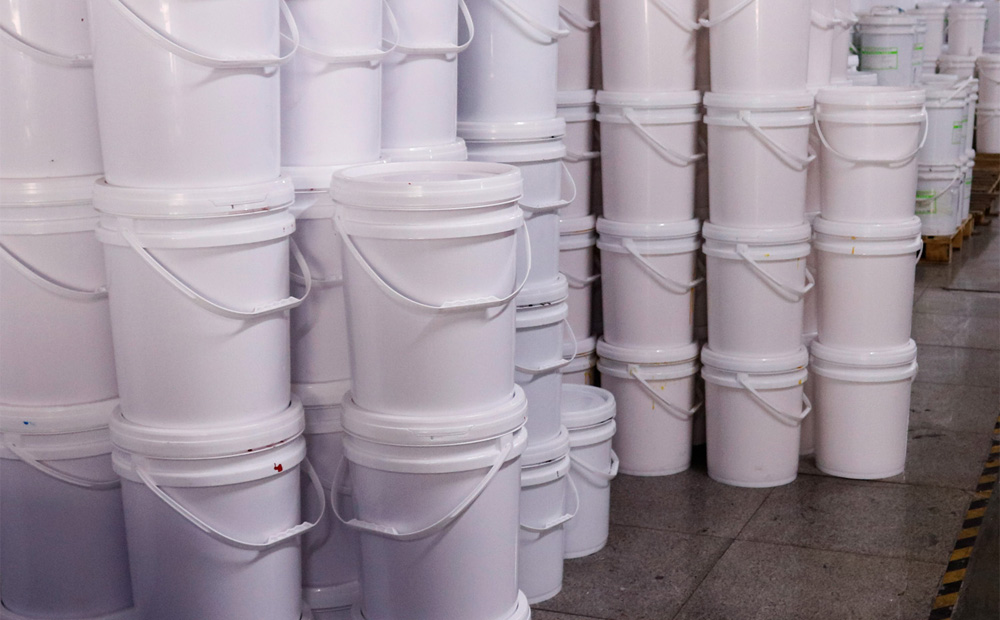Water-based inks, as environmentally friendly inks, have been widely applied in the printing industry. However, to ensure their printing quality and safety, proper storage methods are crucial. Below is a detailed introduction to the storage methods for water-based inks.
I. Storage Conditions
Temperature Control:
The storage temperature for water-based inks should be controlled between 5°C and 35°C. Some sources indicate that the storage temperature can also be maintained between 20°C and 35°C. When the ambient temperature is low, water-based inks tend to thicken, and in severe cases, they may freeze. However, once the temperature rises, these issues will disappear and return to normal.
Ideally, the ink storage room should maintain a constant temperature, with a temperature difference not too extreme compared to the printing workshop. If there is a significant temperature difference between the two, the ink should be brought into the printing workshop early, which not only helps stabilize the ink's properties but also ensures efficient production.
Humidity Control:
The humidity should be controlled between 50% and 70% to prevent the ink from drying out or becoming damp due to excessively low or high humidity.
Environmental Requirements:
Water-based inks should be stored in a dry, cool, well-ventilated, and odorless environment.
Avoid direct sunlight, as prolonged exposure to sunlight can cause the water-based ink to deteriorate due to ultraviolet rays.
Keep away from fire sources and static electricity, and take measures to prevent static electricity in the storage warehouse to ensure safety.

II. Storage Containers and Methods
Sealed Storage:
Unopened water-based inks should remain sealed to prevent dust and impurities from entering.
Used water-based inks should be filtered through a 100-mesh or finer screen before reuse and thoroughly mixed with new ink.
Specialized Storage Equipment:
Store the ink in specialized storage equipment, such as iron drums or sealed plastic bags, to reduce contact with the outside world.
III. Storage Management
First-In, First-Out Principle:
Follow the "first-in, first-out" principle in ink storage and management, meaning that the ink purchased first should be used first to prevent ink from deteriorating due to prolonged storage.
Regular Inspections:
Regularly inspect the storage environment to ensure that temperature, humidity, and ventilation conditions are met.
Conduct quality inspections on ink stored for an extended period and dispose of it promptly if signs of deterioration are found.
Avoid Mixing:
Do not mix water-based inks with alcoholic inks or solvent-based inks or add organic solvents to the ink, as this can lead to printing quality issues.
IV. Precautions
Avoid Low-Temperature Storage:
In some northern regions with severe winter weather, avoid storing ink outdoors to prevent gelation due to low temperatures. If the ink gels, transfer it to a warmer storage room or immerse it in hot water to restore its original state.
Pre-Use Testing:
Before use, test the technical indicators of the water-based ink, especially the color phase, and notify the ink manufacturer for appropriate adjustments if there is a significant deviation.
Thorough Mixing:
Thoroughly stir and shake the water-based ink before use or sampling to ensure a uniform distribution of its components and confirm viscosity, color phase, and other indicators under the same test conditions.
Filtering:
Water-based ink must be filtered before use or re-use on the machine. Ink stored for too long or improperly sealed may develop skin. If the ink skin is not removed, it will severely clog the anilox roll and affect print quality.
Used water-based ink must also be filtered before being used again on the machine, as it may contain impurities such as sand particles, paper fibers, and wear debris from blades. If not promptly filtered and cleaned, it will seriously affect the printing effect.
V. Storage Duration
The shelf life of water-based inks is typically 12 months, provided they are stored under suitable conditions. After the expiration date, various components in the ink formula may disintegrate or precipitate, affecting printing quality and even causing printing failures.
In summary, proper storage of water-based inks is essential to maintain their quality and safety. By following the above storage methods, the optimal performance of water-based inks can be ensured during storage, meeting printing requirements.